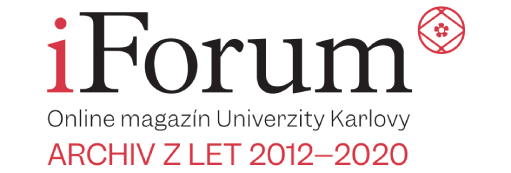2. června 2011
Professor Patrick Anthony Riley Awarded Doctoris Honoris Causa by the Charles University
Prof. P.A. Riley was born on 22nd March 1935 in Neuilly-sur-Seine in France. He spent his childhood in Switzerland where his father, Bertram Hurrel Riley, participated in the founding of the WHO. Patrick Riley studied at University College London and University College Hospital Medical School (UCHMS), graduating in 1960. He joined the Department of Dermatological Histopathology at UCHMS as a Rockefeller Scholar in 1963, where he studied epidermal dendritic cells. By means of the selective melanocytotoxicity of 4-hydroxyanisole (a compound that has accompanied dr Riley throughout his scientific career), he demonstrated the distinct lineage of Langerhans cells and melanocytes. In 1965 he defended his Ph.D. thesis „Studies of Melanocyte Function“.
From 1966 he worked in the Department of Pathological Chemistry, UCHMS, (which over the years turned successively into the Department of Chemical Pathology, the Department of Biochemical Pathology and, finally, the Department of Molecular Pathology) earning the title of Professor of Cell Pathology in 1984. During this period he shared an office with prof.Trevor Slater, a legendary scientist in the field of free radicals, and together they published a series of important papers on various topics of free radical pathology, including aspects of the nature of malignancy. The possibility that free radical generation by defective mitochondria could account for the genetic variability exhibited by malignant cells led to the development of a cytological screening test. In a series of other studies, Riley’s research group investigated the relationship between cellular motility and proliferation. Also a broad knowledge of natural sciences and laboratory experience prompted prof Riley to suggest that differentiation is a phenomenon emergent from a series of time-dependent genetic restrictions.
The scientific community recognises prof. Riley as a world expert and father of metabolically-based melanoma therapy using the tyrosinase-catalyzed production of cytotoxic quinones as the basis. The model compound, 4-hydroxyanisole, reached clinical trial with partial success but, due to unfavourable pharmacokinetics, the search for further cytotoxic tyrosine analogues has continued. In 1991 prof. Riley established the Quintox group, a British-Dutch-Czech association of experts joined by a common interest in quinone toxicity, which, aided by EU funds, produced many significant publications dealing with quinones. This joint work generated novel data which has enabled the reformulation of the Raper-Mason scheme of melanogenesis, which for fifty years had incorrectly described the biosynthesis of melanins.
Prof Riley is co-founder (and former Secretary) of the European Society for Pigment Cell Research, co-founder (and former Vice-President, Secretary and Treasurer ) of the International Federation of Pigment Cell Societies, and a present and past member of many Academic Bodies. He is an Honorary Member of the European Society for Pigment Cell Research (1998), and an Honorary Fellow of the Linnean Society (2009).
Prof. Riley was co-founder and, until 2008, Executive Editor of Melanoma Research. He is a past and present member of the editorial boards of several learned journals (British J. Dermatol., Pathobiology, Pigment Cell Research, Tohoku J. of Medical Science, and also Folia Biologica ).
Since the early nineteen eighties prof. Riley has been in active collaboration with the 2nd Institute of Medical Chemistry and Biochemistry, Faculty of General Medicine, Charles University, namely with prof. Duchoň and prof. Borovanský. This long and fruitful cooperation is reflected by many scientific papers and the first Monograph in the world devoted to melanosomes which will be published by Wiley/Blackwell in 2011.
